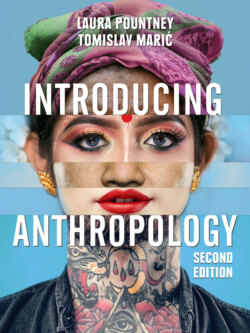Читать книгу Introducing Anthropology - Laura Pountney - Страница 22
Homo denisova
ОглавлениеWhile a lot is known about Neanderthals, relatively little is known about Denisovans. Svante Pääbo, mentioned above, having made incredible scientific breakthroughs in understanding Neanderthals, in 2010 went on to sequence DNA from a tiny fragment of finger bone discovered in the Denisova cave in the Altai mountains of Siberia. The results confirmed that he and his team had discovered an entirely new species, the Denisovans. Although there is only a handful of bones and teeth so far discovered from this species, it has been possible to learn that the Denisovans probably lived across much of Asia tens of thousands of years ago. David Gokhman and Liran Carmel, researchers based at the Hebrew University of Jerusalem, used DNA to reconstruct the appearance of Denisovans. From these studies, it emerged that Denisovans looked similar to the Neanderthals, but with wider heads and more protruding jaws. This information is very useful because it explains how they adapted to their environment and how the genetic traces found in modern humans may have helped this process. Genetic tests show that the Denisovans were close relatives of the Neanderthals and that our ancestors bred with them too, perhaps as recently as 15,000 years ago, which has left modern Melanesians and indigenous Australians with up to 6 per cent Denisovan DNA. Professor Chris Stringer, a human evolution researcher from the UK’s Natural History Museum, states that Neanderthals may have overlapped with Denisovans across Asia for more than 300,000 years.
STOP & THINK
How has recent genetic information challenged the idea that humans evolved separately?
